
Digital printing of vulcanized transfer film
A rubber specific transfer film based on vulcanization process, comprising a substrate and an ink layer printed on the substrate, wherein the melting temperature of the substrate is not higher than the vulcanization temperature in the vulcanization process, and the material of the substrate can dissolve with rubber at the vulcanization temperature. The present invention also provides a vulcanization transfer printing method for rubber products, in which the rubber specific transfer film described in the present invention is attached to the surface of the rubber semi-finished product, and subjected to a pressure of 6-11kg/cm at 140-160C

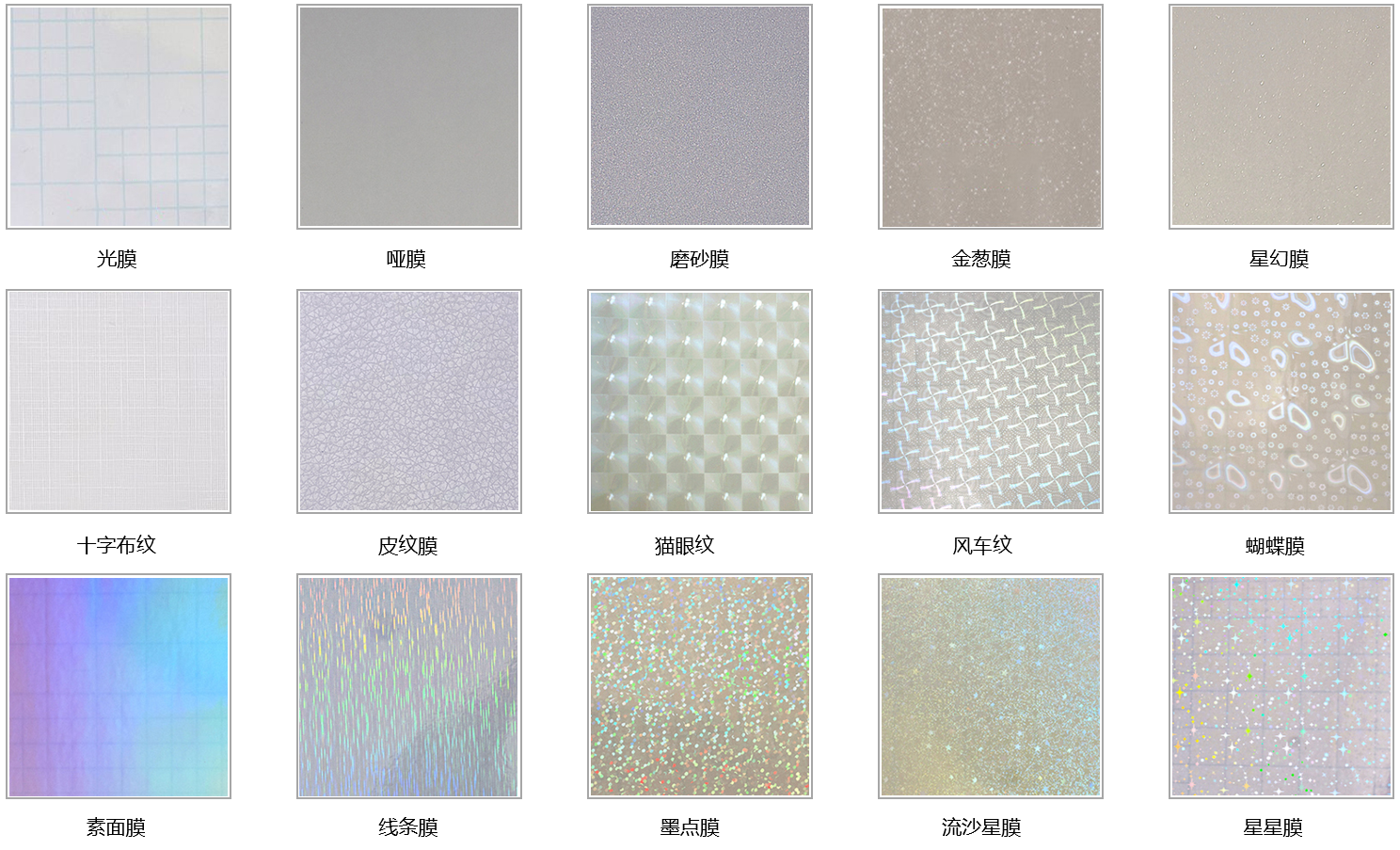
Cold laminated film
Cold layer film is made of transparent BOPP processed with adhesive. According to the texture of the film surface, it can be divided into light film, matte film, frosted film, star phantom film, holographic film, and special textured protective film. Light film, matte film, and frosted film are widely used in advertising production. Cover the manually or cold pressed photo printing image with a cold pressed film to prevent scratches, contamination, or wetting of the image (printing surface) and protect the image
Cold film can enhance the texture of the image and protect it from scratches and water. However, photo images cannot be highly resistant to corrosion and UV erosion. UV rays can penetrate the cold film and cause the image to fade. Over time, the cold film can also become brittle. Can be widely used in wedding photos, oil painting production, calligraphy and painting, outdoor posters, advertisements, various pictures, documents, materials&hellip& hellip; wait...... Used for large-scale advertising, architectural decoration renderings, background decoration, etc., using cold laminating film for better protection effect
Cutting specifications

Roll specifications
Mother roll: Optical film width: 1280mm, Matte film width: 1260mm, Laser film width: 1200mm, Length: 5000M/roll
Slitting rolls: Optical film/matte film of any width * 400M/roll, laser film of any width * 500M/roll
Axis core: optional: 25mm/75mm
Cutting: 50 sheets/pack * 20 packs * box

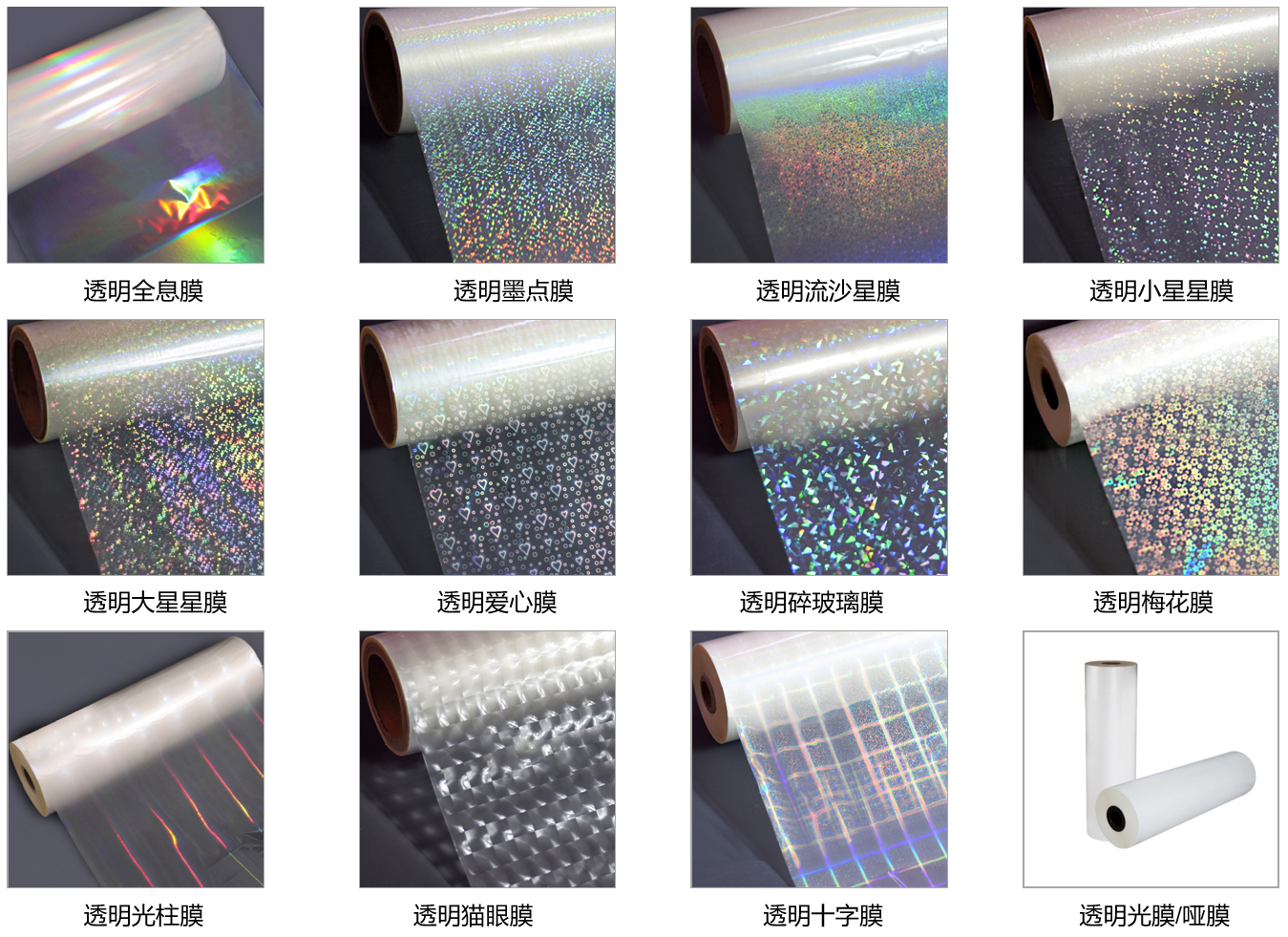
Hot pressed film
Hot pressed film is a physical and thermal property that forms a molten state at high temperatures. After cooling treatment, a sealed protective space is formed. Hot laminating film requires two processes, hot and cold, to form and maintain stable effects for a long time. However, due to the complexity of the process, specialized machines must be used to produce it, which is a universal method, so the cost is relatively high
Hot laminating film refers to the process of pre gluing and rewinding plastic film, and then laminating it with paper printing. It is first coated by a pre coating processing factory according to the usage specifications and format. After rewinding, the adhesive liquid is applied to the film for the manufacturer to choose from. Then, it is compounded/laminated/coated with adhesive on the film, and heated and pressed together with the paper printed product to form a paper plastic product processing technology. After coating, the printed products have a thin and transparent film on the surface, which makes the surface smoother and brighter, thereby improving the glossiness and fastness of the printed products. The graphic and textual colors are more vivid, full of three-dimensional sense, and also play a role in waterproofing, stain resistance, wear resistance, folding resistance, chemical corrosion resistance, etc
Hot pressed film specifications:
Thickness:
Light film: 20μ m 24μm 22μm 25μm 27μm 28μm 30μm
Matte film: 25μ m 27μm 28μm 30μm
Width: 310~1880 millimeters
Length: 100~3000M
Core diameter: 25.4 millimeters (1 inch), 58 millimeters (2.25 inches), 76 millimeters (3 inches)
Application parameters of hot laminating film
Hot laminating equipment: dry and wet heating laminating machine, heat sealing temperature: 95~105 ℃ (measured temperature), heat sealing pressure: 10-20Mpa, speed: 8-20m/min

Low surface tension of thin film materials leads to ink loss
Generally speaking, the surface tension of thin film materials needs to reach 38 dynes or above to ensure normal printing, and 42 dynes or above is required for ink to adhere firmly. If ink drop occurs during the printing process, the surface tension value of the material can be tested using a Dyne pen. If it is lower than the above standard, it is recommended to use online corona discharge or coating with base oil to increase the surface tension of the film material, in order to achieve better ink adhesion effect. If there are no conditions to use the above two methods to solve the problem, low surface energy ink can also be used to try to solve it. At present, many ink manufacturers provide inks specifically for low surface energy materials. Printing companies can solve this problem by testing to find an ink that matches the label material used.
BOPP biaxially oriented polypropylene film
BOPP adhesive label; BOPP is; Biaxially Oriented Polypropylene” The abbreviation is biaxially oriented polypropylene film. The production method is to first make a sheet or thick film of polymer polypropylene melt through a narrow machine head, and then in a dedicated stretching machine, under certain temperature and set speed conditions, vertically pull it out in two directions (longitudinal and transverse) at the same time or step by step, and make a thin film through appropriate cooling or heat treatment, or special processing (such as corona discharge, coating, etc.)
BOPP material composition:
1. Raw material: BOPP adhesive material< br /> 2. Adhesive: General adhesive, universal strong adhesive, special labeling requirements can be customized with adhesive< br /> 3. Bottom paper classification: Bottom paper can be divided into white, blue, yellow, thick white, economic yellow, etc
Advantages of BOPP material:
1. Good mechanical properties: BOPP film undergoes biaxial stretching during production and has excellent mechanical properties. It has good impact resistance, crease resistance, friction resistance and other properties< br /> 2. Non toxic and odorless: BOPP film is made of food grade raw materials, which are non-toxic and odorless, and meet the requirements of food safety< br /> 3. High transparency: BOPP film has high transparency, which can clearly display the contents of the sticker and improve the appearance quality of the product< br /> 4. Good moisture resistance: BOPP film has a certain degree of moisture resistance, which can prevent moisture from entering the packaging to a certain extent and extend the shelf life of the product< br /> 5. Excellent heat sealing performance: BOPP film has good heat sealing performance and can be heat sealed at lower temperatures, reducing production costs< br /> 6. Wide application range: BOPP film can be made into different types of labels, packaging bags, tapes, etc., with a very wide range of applications
Disadvantages of BOPP material:
1. High price: Compared to other ordinary plastic films, BOPP film has a higher price, which increases production costs< br /> 2. Sensitive to temperature and humidity: BOPP film is sensitive to temperature and humidity, and is prone to deformation, shrinkage, discoloration, and other issues in high temperature and high humidity environments< br /> 3. Easy to scratch: Due to the low surface hardness of BOPP film, it is prone to scratches, which affects its aesthetics and usability< br /> 4. Not easy to recycle: BOPP film is not easy to recycle and reuse, which has a certain impact on the environment
The future development of BOPP adhesive labels may face the following directions:
1. Functional enhancement: BOPP adhesive labels may develop more special functions, such as waterproofing, oil resistance, sun protection, etc., to improve the shelf life of products< br /> 2. Environmental sustainability: Environmental protection and sustainability will become the focus of attention, and manufacturers may use more renewable materials to reduce their impact on the environment< br /> 3. Intelligent production: Utilizing advanced technologies such as artificial intelligence and big data to improve production efficiency and reduce costs< br /> 4. Application field expansion: BOPP adhesive labels may expand to more fields, such as pharmaceuticals, cosmetics, personal care products, etc
BOPP series adhesive material list
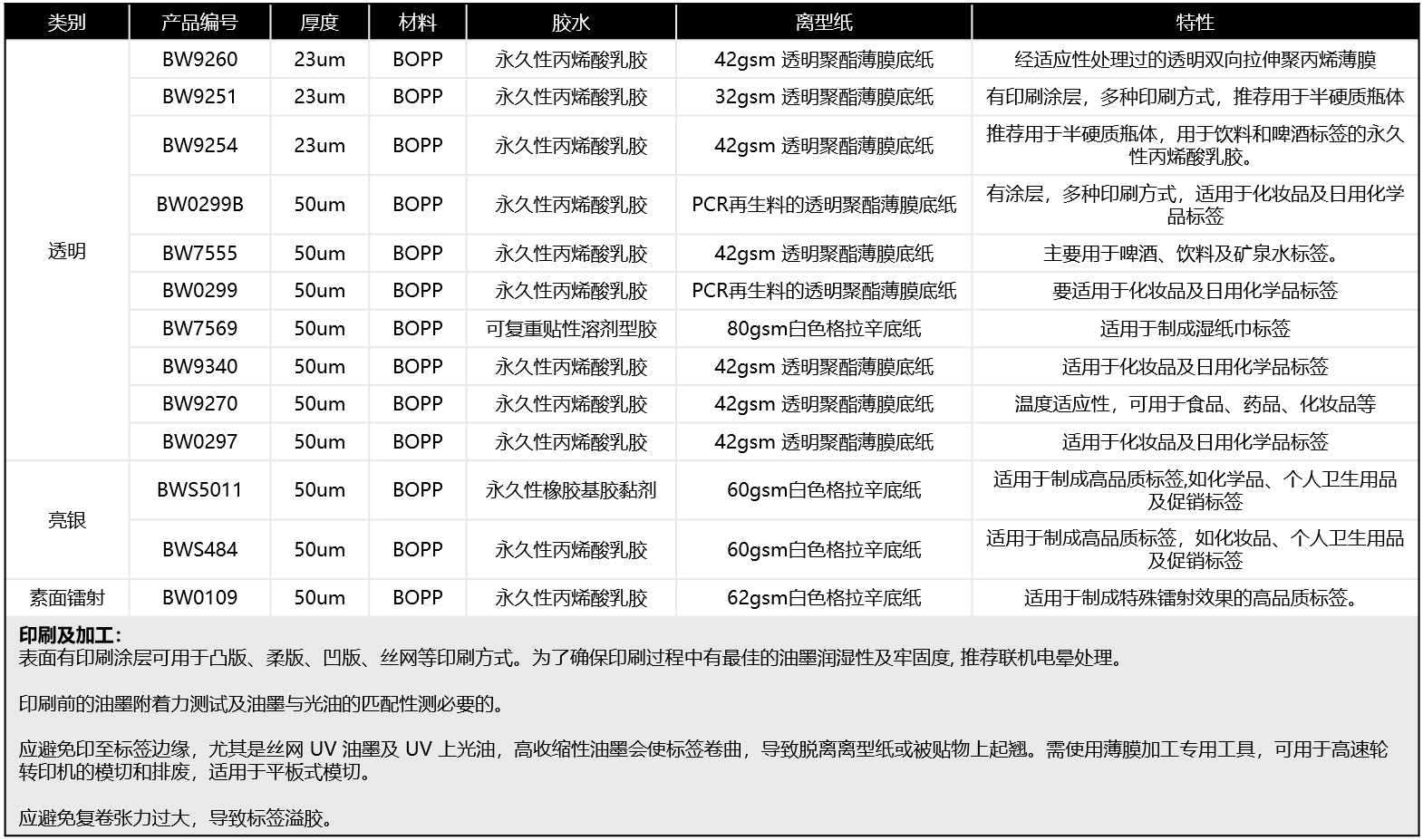
We offer comprehensive technical support, including free professional labeling solutions, advice on label materials and adhesive selection, as well as online/offline assistance from professional software and hardware engineers. Service email: andy@ownlikes.cn. In pre-sales, we leverage our extensive experience in specialty labeling projects to provide clients with the most suitable hardware solutions. Additionally, all our label barcode printers and scanners come with a three-year free warranty, demonstrating our confidence in our products.


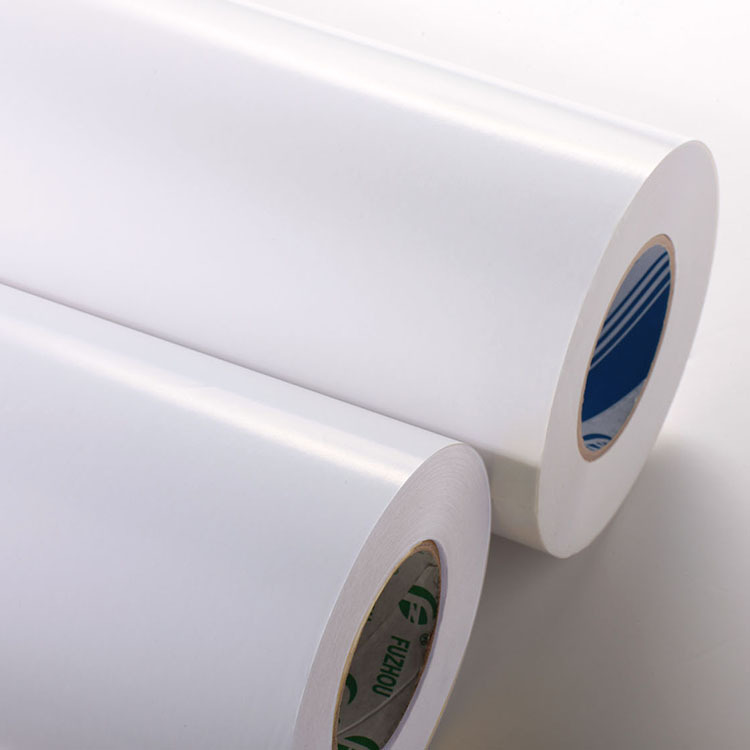
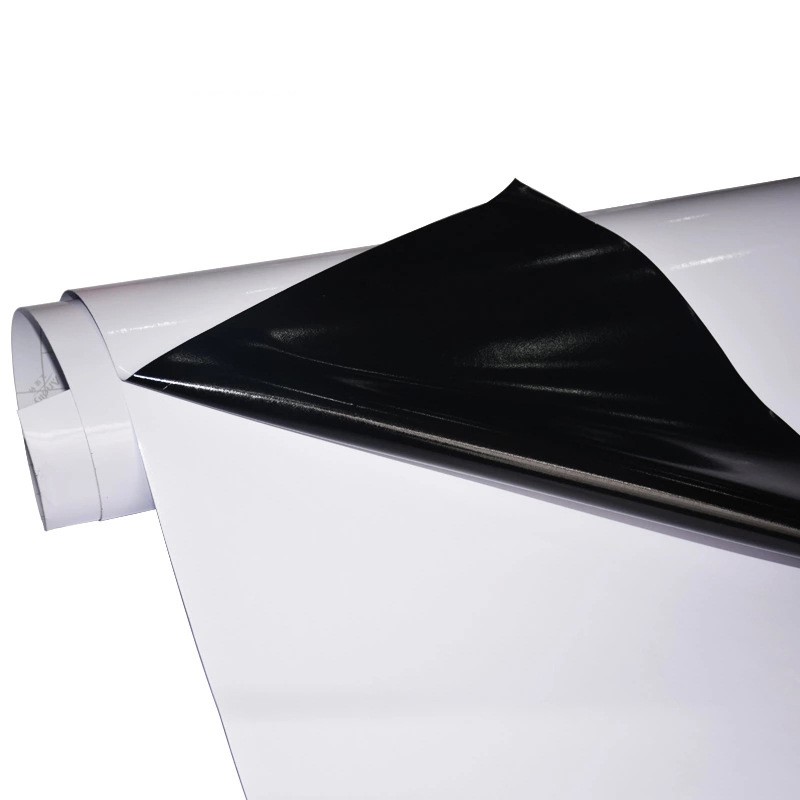
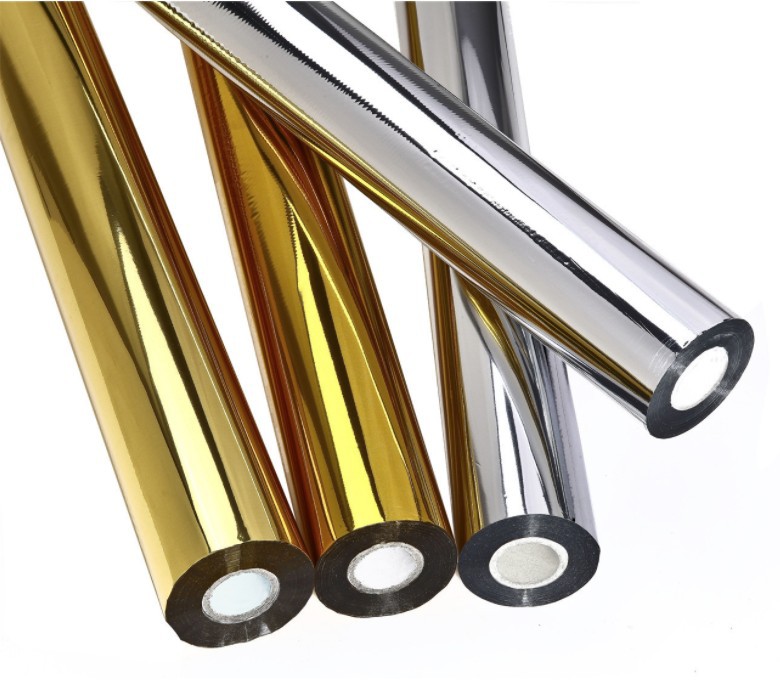
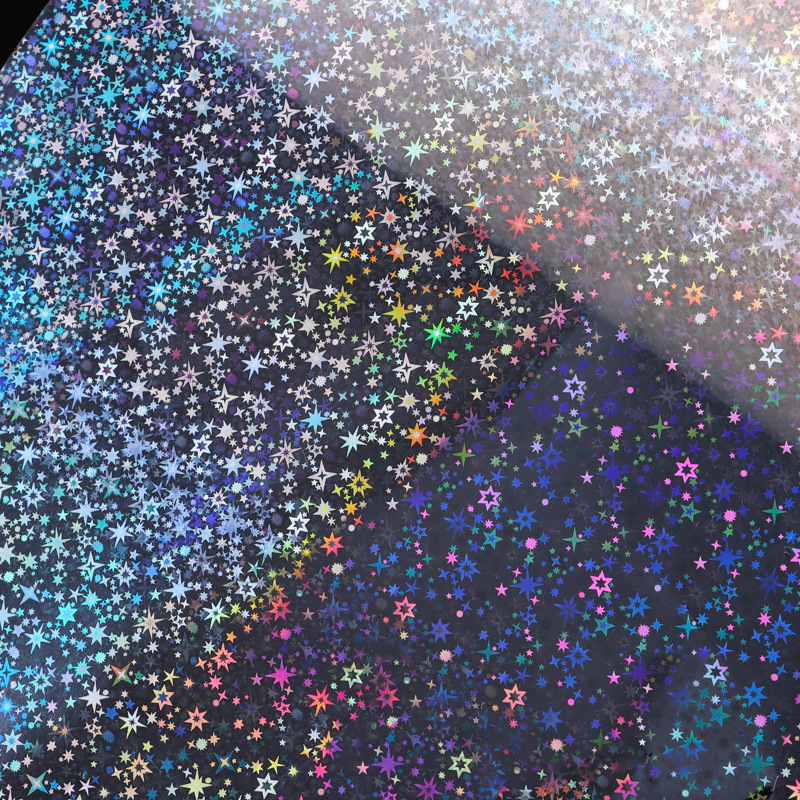
This site is protected by reCAPTCHA and the Google Privacy Policy and Terms of Service apply.